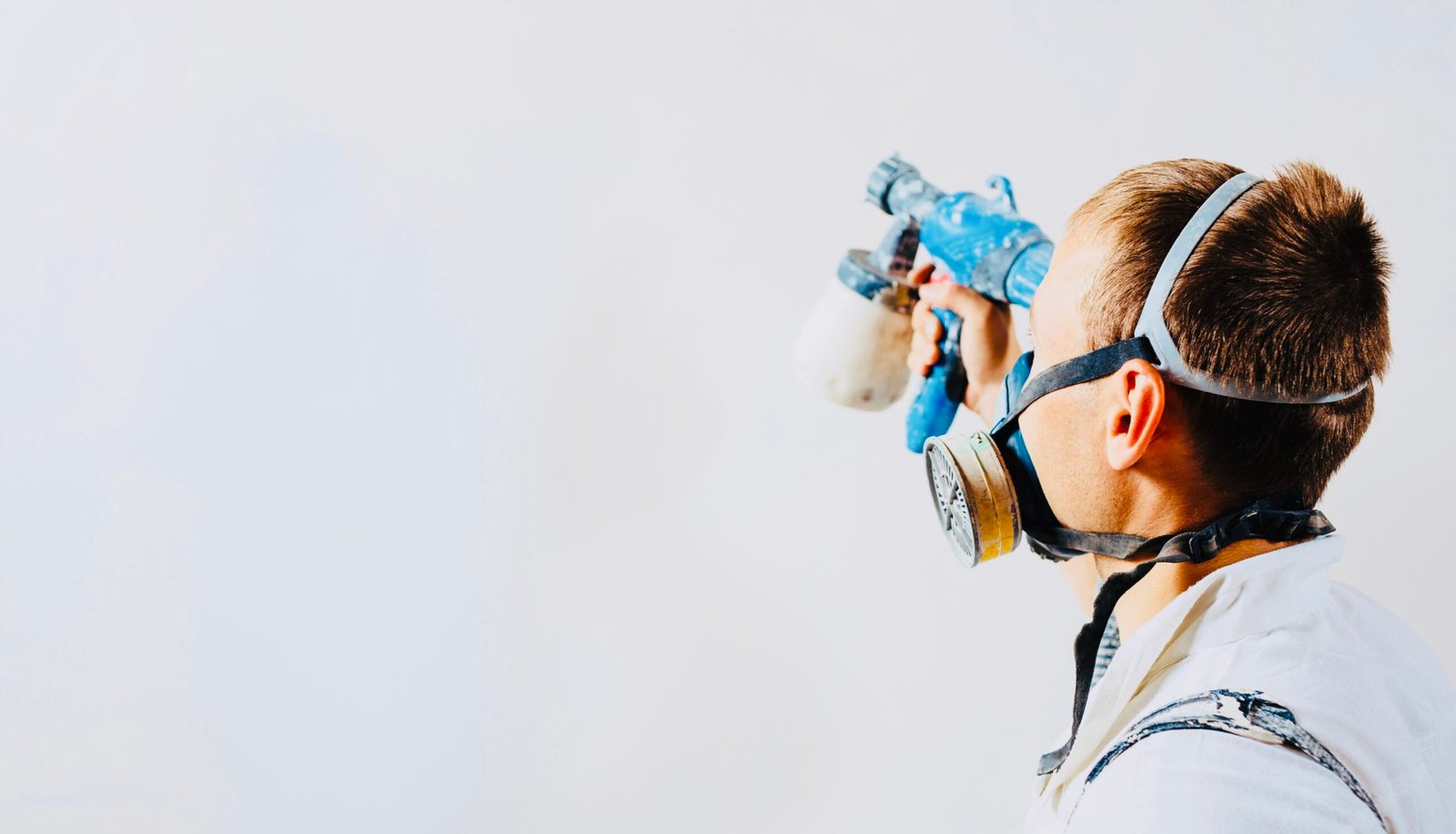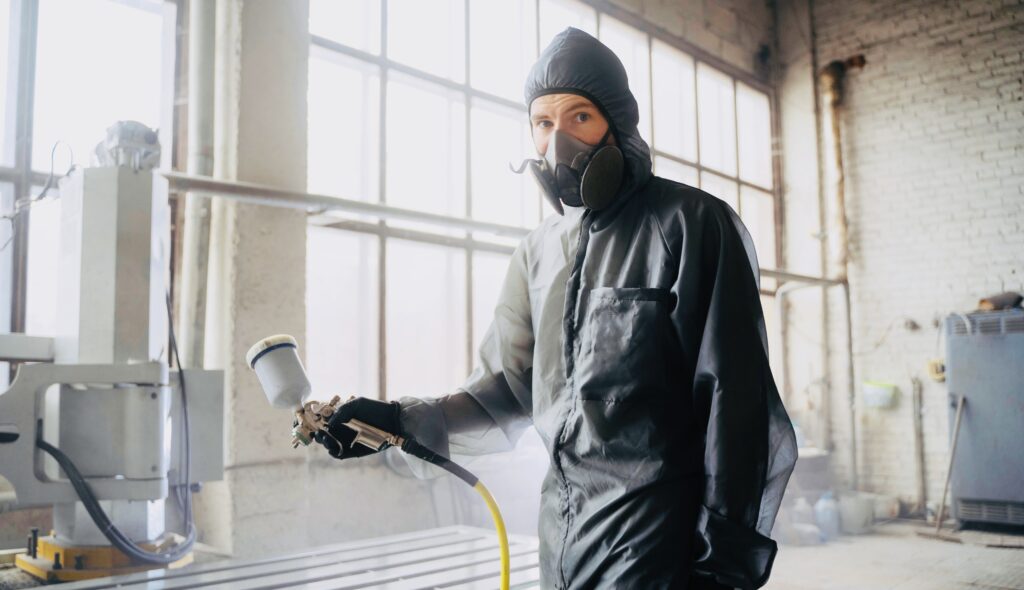Breathing Easy: A Guide of How To Clear Lungs Of Spray Paint Residue
Exploring the world of spray paint brings a burst of creativity, but it’s necessary to consider the potential health impact, particularly on our respiratory system.

This comprehensive guide will help you understand spray paint and provide a step-by-step approach to How To Clear Lungs Of Spray Paint, ensuring your well-being remains a top priority.
Understanding Spray Paint
Before we tackle the procedures of clearing spray paint from your lungs, it’s helpful to understand the composition of spray paint. Aerosolized paint particles can be harmful when inhaled, containing various chemicals like solvents, pigments, and propellants. These components can irritate the respiratory system, leading to short-term discomfort and potential long-term health issues.
How Spray Paint Affects the Lungs
Spray paint inhalation poses risks to the respiratory system. The particles can penetrate the lungs, causing irritation, inflammation, and, in some cases, chemical pneumonia. Prolonged exposure may contribute to chronic respiratory conditions. Recognizing these potential risks underscores the importance of taking proactive measures to clear your lungs effectively.
How To Clear Lungs Of Spray Paint: Step-by-Step Guide to Clearing Lungs of Spray Paint
- Immediate Action: Act promptly if you’ve inhaled spray paint. Move to a well-ventilated area and focus on steady breathing.
- Stay Hydrated: Increase your fluid intake to help your body naturally flush out any particles that may have entered your respiratory system.
- Use a Humidifier: A humidifier can add moisture to the air, soothing irritated airways and aiding in removing particles from your lungs.
- Deep Breathing Exercises: Practice deep breathing to enhance lung function and promote the expulsion of any remaining paint particles.
- Steam Inhalation: Inhaling steam can help soothe respiratory passages. Add a few drops of eucalyptus oil for potential additional benefits.
- Seek Fresh Air: Spend time in an outdoor environment with clean, fresh air to accelerate the clearance of particles from your lungs.
Instant Rescue: Know How To Clear Lungs Of Spray Paint
In situations where immediate relief is needed, consider the following:
- Seek Medical Attention: If symptoms persist or worsen, seek professional medical help promptly.
- Use a Respirator or Mask: When working with spray paint, wearing a proper respirator or mask can prevent inhalation of harmful particles.
What to Avoid While Cleaning
While attempting to clear your lungs, avoiding common pitfalls that could exacerbate the situation is essential.
Steer clear of:
- Smoking: Smoking further irritates the respiratory system, hindering the natural healing process.
- Harsh Chemicals: Avoid exposure to strong chemicals, which may aggravate respiratory symptoms.
- Ignoring Symptoms: If respiratory symptoms persist, ignoring them can lead to complications. Seek professional advice promptly.
Additional Tips for Lung Health:
Natural Remedies
Explore natural remedies that can complement the clearing process. Herbal teas, such as chamomile or peppermint, are known for their respiratory benefits. However, consult with a healthcare professional before trying new herbal treatments.
Healthy Lifestyle Choices
Embrace a healthy lifestyle to support overall lung function. Regular exercise, a balanced diet rich in antioxidants, and avoiding exposure to environmental pollutants contribute to respiratory well-being.
Professional Evaluation
If respiratory symptoms persist, seeking professional evaluation is crucial. A healthcare provider can conduct lung function tests, chest X-rays, or other diagnostic assessments to ensure a comprehensive understanding of your respiratory health.
Occupational Safety Steps
If spray painting is a regular part of your activities, consider occupational safety measures. Invest in high-quality respiratory protection equipment, ensure proper ventilation in your workspace, and take breaks to minimize prolonged exposure.
Artists’ Communities
Connect with artists’ communities to exchange insights and experiences. Fellow artists may offer valuable tips on maintaining lung health while pursuing their creative passions.
Mindfulness Practices
Add mindfulness practices into your routine to manage stress, which can impact respiratory health. Techniques like meditation and deep breathing exercises promote relaxation and support overall well-being.

Acknowledging the Impact of Environment
The environment plays a vital role in respiratory health. Consider factors such as air quality in your workspace, potential allergens, and the atmosphere. Investing in an air purifier can help create a cleaner, healthier environment for your lungs and creative pursuits.
Understanding Paint Composition
Dive deeper into the composition of different spray paints. Water-based paints, for instance, often contain fewer harmful chemicals than oil-based paint alternatives. Exploring alternative paint options may provide a safer experience for your respiratory system and the environment.
Art and Health Advocacy
As an artist, consider joining or supporting advocacy groups that promote the intersection of art and health. These groups often share valuable insights into maintaining well-being while engaging in artistic activities, fostering community, and exchanging knowledge.
Exploring New Artistic Mediums
Expand your artistic horizons by exploring alternative mediums that may pose fewer respiratory risks. This could include digital art, sculpture, or other forms that align with your creative vision while minimizing exposure to potentially harmful substances.
Take A Break into Your Creative Process
Integrate regular breaks into your creative sessions. Stepping away from your work allows you to breathe in fresh air, reducing the concentration of paint particles in your immediate surroundings. Use this time to practice deep breathing exercises and rejuvenate your mind and body.
Creative Spaces Designed for Health
Consider designing your creative space with health in mind. Optimize ventilation, choose low-emission materials, and create a well-lit and comfortable environment. A thoughtfully designed studio can enhance your artistic experience while prioritizing your respiratory health.
Holistic Health Practices for Artists
Yoga and Breathing Exercises
Add yoga and specialized breathing exercises into your routine. Practices focusing on deep, diaphragmatic breathing can enhance lung capacity and promote respiratory efficiency. Yoga also offers the added benefits of stress reduction and improved overall well-being.
Nutritional Support
Explore nutritional strategies that support respiratory health. Foods rich in antioxidants, such as fruits and vegetables, contribute to lung function. Omega-3 fatty acids found in fish and nuts are known for their anti-inflammatory properties, offering additional support.
Hydration Importance
Prioritize hydration as an integral aspect of respiratory health. Maintaining optimal fluid levels supports the mucous membranes in the respiratory tract, aiding in the natural defense against irritants. Adequate hydration also promotes overall bodily functions.
Regular Health Check-ups
Schedule regular health check-ups to monitor lung function and overall well-being. Proactive healthcare allows for early detection of potential issues and ensures timely interventions to safeguard your respiratory health. Combining these additional tips with the core strategies for clearing spray paint from your lungs creates a comprehensive approach to maintaining respiratory well-being.
How To Clear Lungs Of Spray Paint: FAQ
Q1: Can I use over-the-counter cough medicine to alleviate symptoms?
A: Over-the-counter cough medicine may provide temporary relief, but it’s essential to consult a healthcare professional for personalized advice.
Q2: How long do symptoms typically last after inhaling spray paint?
A: The duration of symptoms can vary. If symptoms persist or worsen, seek medical attention.
Q3: Can I continue spray painting in the future without health risks?
A: Implementing proper safety measures, such as using a respirator and ensuring adequate ventilation, can minimize health risks associated with spray painting.
Q4: Are there long-term health effects from inhaling spray paint?
A: Prolonged exposure to spray paint fumes can contribute to chronic respiratory conditions. Seeking medical advice is crucial for proper evaluation.
Q5: Are there preventive measures to avoid inhaling spray paint?
A: Yes, using protective gear like respirators, working in well-ventilated areas, and taking regular breaks can reduce the risk of inhalation.
Final Touch
Ensuring a safe and healthy environment amid spray painting activities involves proactive measures and informed decision-making. By understanding the risks, implementing immediate rescue measures, and adopting a cautious approach during cleanup, you empower yourself to enjoy the creative process without compromising your respiratory well-being.
This guide on How To Clear Lungs Of Spray Paint will help you explore more artistic projects.
Happy Painting!

